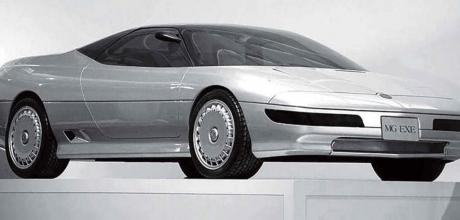1985 MG EX-E Concept a symbol of hope?
After the closure of Abingdon and the end of MGB and Midget production, the prospect of a new MG sports car seemed a distant dream but, at Frankfurt in 1985, Austin-Rover stole the show. Words: Craig Cheetham.
ARCHIVE MG EX-E
The story behind the concept car that was too exciting to keep secret
It's fair to say that, at the start of the 1980s, British Leyland was in a state of utter turmoil but, when the new Austin Rover Group (ARG) emerged from the ashes as part of the Michael Edwardes restructuring plan in late 1981, there were glimmers of hope. It was hope that came with pain and also the disappearance of some of the most treasured brands, among them Triumph and, for a short while at least, MG.
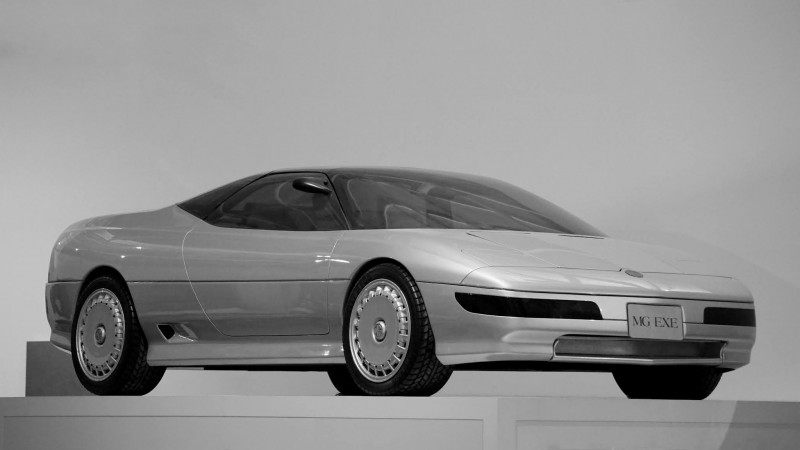
The newly-formed Austin Rover Group’s priority was to ensure that the new Metro sold in decent volumes and also to get behind the launch of the rapidly approaching Maestro and Montego models, which represented ARG’s volume opportunity. As anyone who's ever worked in the automotive industry knows, if the volume models aren't selling then the niche models don't stand a chance, no matter how bright a halo they might shine over the rest of the range.
THE VISUAL GOAL WAS A SPORTS GT OF GENERALLY FERRARI 308 SIZE AND PROPORTIONS
Leading the design team at the nascent Austin Rover Group was Roy Axe, A British car designer who had spent the past 15 years working for Chrysler, both in Europe and in Detroit. Axe was renowned for his squared-off, clean and clinical styling; themes that were prevalent in his Chrysler work in the ’70s and ’80s on models such as the Chrysler Alpine and US-market Le Baron, and would become equally important to Austin Rover, particularly in the Rover 800 and then the later 200/400 models.
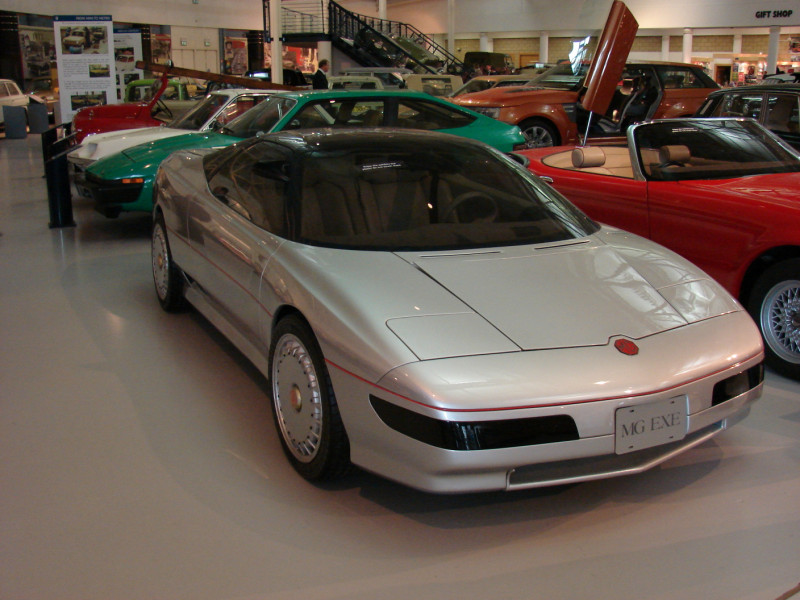
Axe, who died in 2010, also believed in the power of heritage and the strength of branding and, while there wasn't enough money to launch new MG sports cars in the early to mid-1980s, the brand was at least kept alive via the Metro, Maestro and Montego models. For purists, though, no amount of red seat belts and pretty alloy wheels would make up for the loss of a proper sports car and, while it was always in the plan to bring back the MG brand, nobody could really predict the gestation period of what would ultimately become the MGF at this stage.
IF THE VOLUME MODELS AREN'T SELLING THEN THE NICHE ONES DON'T STAND A CHANCE NO MATTER HOW BRIGHT THEIR HALOS
The idea of a volume MG sports car, then, came a whole decade sooner and both thrilled the crowds and silenced the critics at the 1985 Frankfurt Motor Show. The MG EX-E had been a brilliantly kept secret, unexpected by media or show visitors. It was a striking two-seater, hard-top sports car, billed at the time as: ‘The concept car that was too exciting to keep secret’.
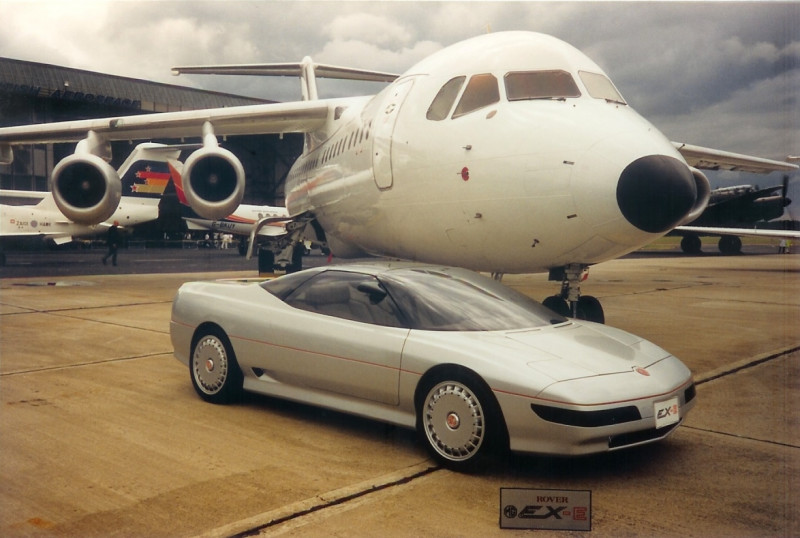
The project was led by Roy Axe as design director, with the assistance of Gordon Sked, Richard Hamblin and a young designer by the name of Gerry McGovern who would, of course, go on to lead the design of the MGF. Although there was internal resistance, Axe also wanted to ensure the vehicle was potentially a production reality which led to some tensions within Austin Rover, not least because of resistance from the company’s engineering teams.
Axe won the argument largely on the grounds that the Rover 800 programme was a year behind schedule. Writing in his book A Life in Style he said: “At this point I felt that I should really pressure ARG to create and show a true concept car for the international show circuit. The Rover 800 was running into timing difficulties due to quality issues and there was nothing happening otherwise apart from the less than exciting introduction of the Maestro and Montego.
“I felt that the company needed a shot in the arm, something that would excite the press and create copy worldwide, something unexpected. I also needed something to say to the design fraternity that ARG had a new design operation that could compete globally, this in order to attract the quality of new people I needed for the work in hand. “I owned a Ferrari 308 GT4 at the time and felt that a sports car of this type, updating the Ferrari and showing that England was just as capable of producing a car with worldwide appeal, would do the trick. Marketing were against the idea as ARG did not make such cars and that it would prove to be a sales distraction.”
PERHAPS AUSTIN-ROVER GROUP WASN'T AS BACKWARDS AS THE GENERAL PUBLIC BELIEVED
Ironically, the EX-E went on to generate more media coverage than some of Frankfurt’s main new models that year, including the brand new Mercedes-Benz W124, which was a massive new launch for the domestic market. As a prototype, EX-E was technically fascinating, with a drag coefficient of 0.24 and an aluminium spaceframe that was bonded together. The self-coloured, unstressed plastic body panels were a novelty, too, while a glass-topped targa roof was added to give it some open-air appeal.
It was also built with the possibility of production very much in mind. Underneath, it rode on an MG Metro 6R4 platform, and was designed from the outset to be powered by a version of its V6 engine. Indeed, Roy Axe himself had gone on record as saying that there were some fairly advanced meetings to discuss how the EX-E could be properly productionised.
Not all of it of course because, like any concept car, a lot of its features were looking far too far into the future. Ironically, technology such as active suspension, parking radars, LCD digital instrumentation and a head-up display have gone on to become commonplace in the cars of today.
Other strikingly modern innovations included remote central locking, a navigation system, automatic wipers and hands-free operation for the car’s built-in telephone. Perhaps Austin- Rover Group really wasn't as backwards as the general public believed back in the Thatcher era?
At the Frankfurt Motor Show, when the EX-E was revealed, ARG boss Harold Musgrove said: “As a car enthusiast, I would dearly like to build the MG EX-E. As a businessman — well, that could be a different matter.”
The mechanical layout of the car was also interesting, in that it used a de-tuned version of the MG Metro 6R4's engine, mid-mounted as in the rally car. “The visual goal was for a sports GT of generally Ferrari 308 size and proportions, but with a totally unique look,” said Axe. “We decided that the MG name was the only appropriate one to use and that E followed F as a logical type name [project ‘MG F’ was already an idea at this stage]. I am an aircraft enthusiast and a follower of military aircraft style, if that is the right term. I was very impressed by the F16 Falcon fighter with its command pilot position and surrounding bubble canopy, and this was the inspiration I gave to the design team.
“The Design Manager for the exterior of the project was Gordon Sked and the small team of designers included some new college grads and Gerry McGovern, who was new to the company having joined from Peugeot. Gerry had been hired by me directly from school, as something of an experiment, years earlier at Chrysler UK.
“The project started well then got bogged down as such projects often do. I remember one weekend morning getting the team together and thrashing out some of the forms. The form had become heavy and I felt it should take a cue from the 308 and have the bonnet surface be below the wings creating a lighter look and the great view forward from the cockpit that I so admired in the Ferrari. The problems were sorted out and the form that eventually became the final model emerged in the three dimensional development.”
The interior design, meanwhile, was headed-up by Richard Hamblin and required a hi-tech look to reflect the new technology that was emerging so rapidly in the 1980s.
“The final sketches used in the publicity covering the design process were, in fact, produced after the event as it were. Gerry McGovern was involved in the project and did those drawings but, in fairness to the others, he was not the sole designer. It was a team effort,” added Axe.
The show model has been well preserved, and remains a feature at the British Motor Museum in Gaydon.
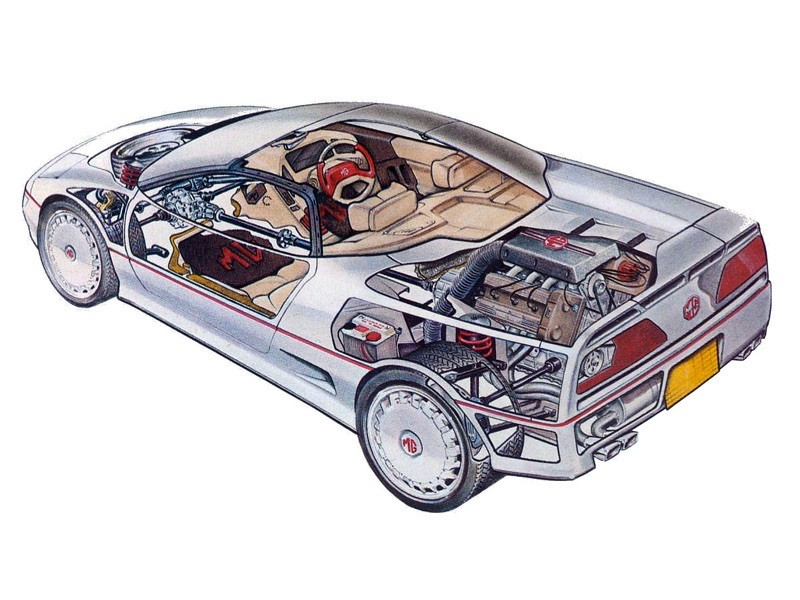
Today the EX-E is displayed at Gaydon. Cutaway shows how 6R4 engine was installed
EX-E was so much closer to production-ready than most concept cars or styling studies. If only it had made the final cut...Roy Axe


